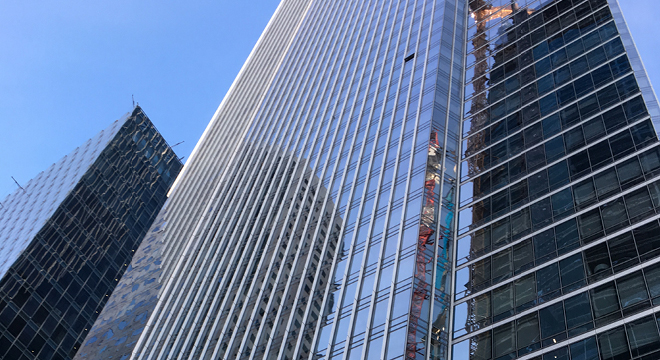That Sinking Feeling | San Francisco’s Millennium Tower
Millennium Tower is one of the most glamorous and expensive places to live in San Francisco. A symbol of wealth, it is home to many of the City’s sports stars and tech moguls. With each of its units selling for millions of dollars, residents are understandably furious to find out the building is sinking.
Since its completion in 2009, Millennium Tower at 301 Mission Street has sunk 16 inches and now tilts 15 inches at its top to the northwest. The original estimates expected only a 4 to 6 inch settlement over the life of the building. New estimates are now reporting that the building could sink by as much as 31 inches at a current rate of 1 inch per year. As the building continues to sink, the lean will worsen. Residents are already reporting issues with uneven floors, difficulty opening and closing doors, windows, and cabinets, as well as interior wall cracks.
A fight over who is to blame has erupted between Transbay Joint Powers Authority (TJPA) and Millennium Partners, the building’s developer. TJPA is currently building their new Transit Center next to the Tower. They blame the building’s structural shortcomings on the Tower’s foundation and argue the Tower should have been supported by end bearing piles drilled down 200 feet to bedrock. Instead, the Tower rests on almost 1,000 friction piles just 60 to 90 feet deep. Millennium Partners argue that TJPA caused the damage by dewatering the soil into which the tower’s piles were driven. Without properly maintaining the water table equilibrium, the soils have softened and compressed. Since no party has taken responsibility, the current Home Owners Association has filed a lawsuit against both parties.
Diagram Source: www.understandconstruction.com
End Bearing Piles – The bottom of the building piles rests on a layer of especially strong soil or rock. The load of the building is safely transferred through the pile to the strong layer below.
Friction Piles – Multiple piles are driven into the soil which works to distribute the building load by surface resistance. Usually this technique is used in liquid soil areas like San Francisco. To visualize this, imagine being at the beach and pushing your sun umbrella into the sand. Eventually you won’t be able to push the pole in any further no matter how hard you push. In principle, this resistance of the soil against the piles allows a large building to sit on top.
Historically, San Francisco was a low-rise city due to seismic activity and reclaimed land from the bay. Although Millennium Tower was built using traditional San Francisco foundation techniques, it is also the tallest and heaviest reinforced concrete building on the West Coast. TJPA argues that the tower is 4-5 times heavier and 28 stories higher than lighter steel buildings in the area with similar foundations. Since the discovery of the Tower’s sinking issue, four new projects around the Transit Center have begun construction with end bearing piles driven into bedrock.
In 2008, TJPA promised to pay for any soil settlement and cracking caused by the transit hub’s construction and spent 58 million to create an underground buttressing system to hold up the Tower before excavations began. By that time the tower had already settled 10 inches; 4 inches more than what was predicted over the life of the building. Geotechnical reports showed that the settling has been uneven resulting in the building’s continued tilt. TJPA argues that before starting its own construction, Millennium Tower was already sinking unevenly and by building a wall between projects, it took the necessary precautions to make sure their excavations would not affect the tower.
Residents are in an uproar over the fact that Millennium Partners knew the building was sinking a year before sales started. With the current conditions made public, the luxury tower is now suffering a massive reputation change. Safety concerns with no viable repair plan have resulted in difficulty selling units, reduced property values, and made bank refinance options unlikely.
A class action lawsuit against the TJPA and Millennium Partners is seeking a minimum of $500 million in damages. Since TJPA is a public agency, taxpayers could be liable for millions of dollars in repairs. This could be the most contentious and expensive residential legal battle in San Francisco’s history and reinforces the importance of site and soil conditions for any construction project.

Image Source: Hydrogen Iodide at en.wikipedia






Leave a Reply